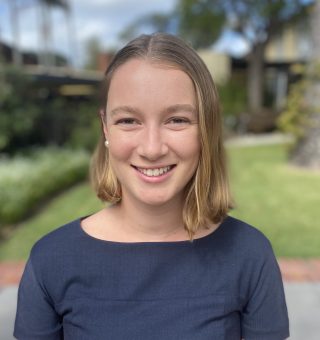My name is Ella Sinclair. I have just graduated from Queensland University of Technology with a Bachelor of Science, majoring in Biology and minoring in Earth Science and Wildlife Ecology. I am planning on pursuing post-graduate study in marine science, commencing my Honours in July 2021. I am a student on the R/V Falkor, learning from Marine Technicians and Chief Scientists about multibeam sonar mapping and understanding geological features and processes from thousands of years ago.
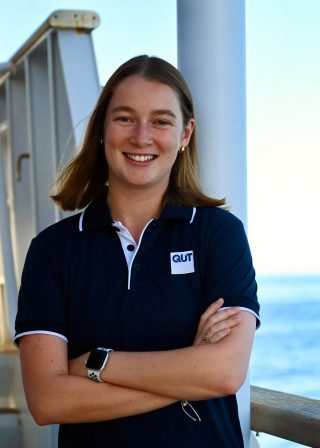
Two weeks before the departure date for this cruise, my supervisor for my Honours project, Dr. Luke Nothdurft, sent me an email, offering me this opportunity to join the month-long cruise. With only two weeks’ notice, I moved everything around and made it happen. After the initial safety inductions on the ship and settling in, we left for sea on the 22nd of November at 0800.
Life on the Falkor is like no other experience. Working with such an experienced and knowledgeable team in this real-world environment is incredibly eye-opening. In the control room, I work 1200-1600 every day, learning from the Marine Technicians about mapping, the software being used, and interpreting and understanding the structures we are finding. I am currently one week into the voyage, and every day is completely different. As a student, I can visit different parts of the ship, including getting a tour of the engine room, the galley and learning about how the communications and internet are run on board. I even got the opportunity to steer the ship on the bridge, and participate in communicating our findings out to the wider community.
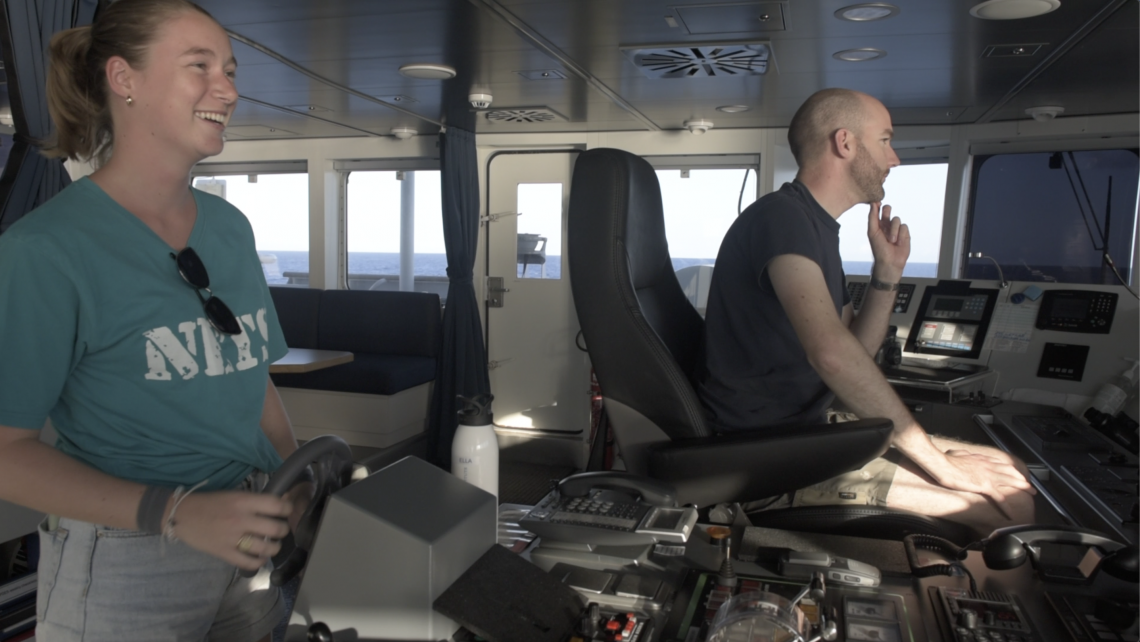
Being in a completely new environment every day for a month can be very overwhelming. However, with 29 different crew members from all over the world, working in completely different parts of this ship, all for the same mission – to acquire knowledge about the ocean and communicate it to the greater science community – makes every day completely different and interesting.
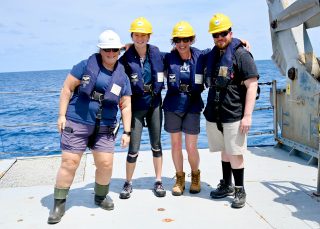
This voyage aims to map and explore the seafloor, uncovering past shorelines, rivers, deltas, and reefs, which existed during the Last Glacial Maximum (Ice Age). Since the last Ice Age, these features have been drowned as the sea level rose to 120 m due to the melting of glaciers and ice-sheets. By mapping and uncovering these environments, we gain a better understanding of the environment during this time in Australia and can predict how the current environment may respond to climate change and rising sea levels.
Working alongside Marine Technicians and scientists on and off the R/V Falkor, I am constantly learning about the processes and skills required to do this type of research. My job on board involves assisting in the mapping process by ensuring we are getting accurate and reliable data with multibeam technology. I am involved in cleaning the data that we send off to scientists on shore who carry out further study. I also assist in running sound velocity profiles, which involve lowering an instrument into the water whilst the ship is stationary and measuring the speed of sound using sensors on regular intervals. This gives us an understanding of the depth of the environment and assists in recalibrating the multibeam sensors.
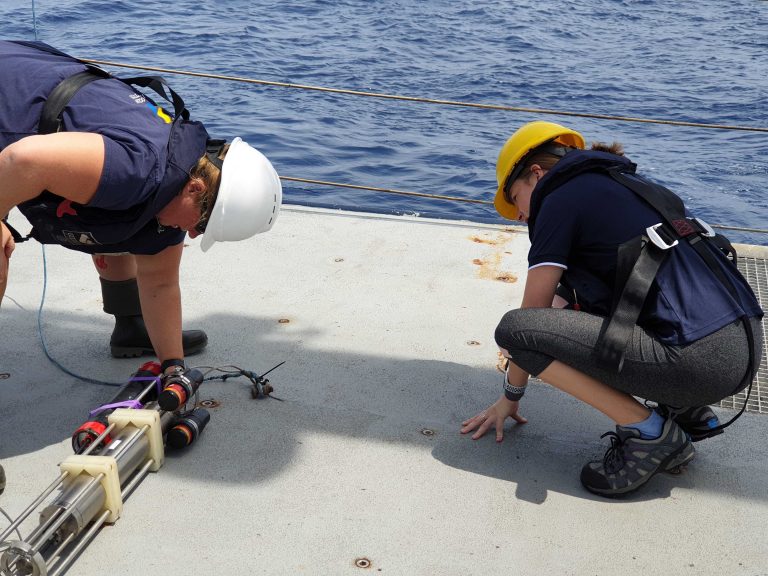
So far, this opportunity has been extremely beneficial as it has provided me with an understanding of how science is achieved and collected in the real world and how all different disciplines work together in many different ways to collect this knowledge. Whilst we are collecting this data over the course of the next month, I keep reminding myself that I am one of the first people in the entire world to see what is at the bottom of the seafloor in this area. It is one of the best experiences I will ever have, and I am enjoying every minute of it.
